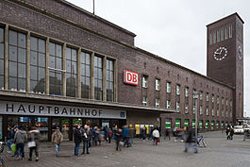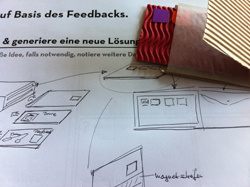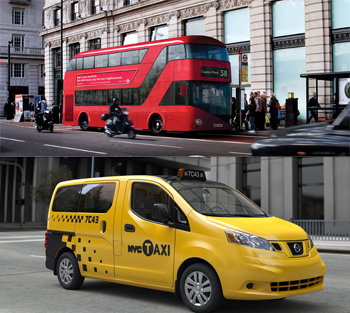Beginning of December market research company IDC released their market numbers for smartwatches and fitness devices (the summarize is as wearables) with fitbit leading the pack with a strong 23% while the Apple Watch only makes it to place 4 with 4.9% (here)
I found this quite surprising, but can now add a personal view to it.
For the last year I have been wearing and using a fitbit charge HR – as a fitness tracking device and to a lesser extent as a watch. The watch functionality is really very limited, especially as I switched off the “switch on by turning your wrist“-feature. I find this very annoying in the night and I don’t like switching off the feature every night. Also because it can not be done on the device, but requires syncing with the phone. Maybe someone could put a feature request in to sync the feature with the sleep detection. The major drawback of the fitbit, however, is that it looks pretty ugly.
But for some time I also wanted to try out the Apple Watch. Mainly because it is a nicer „watch“ combined with a different flavor of fitness device. So now I have been wearing an Apple Watch for a few weeks. And I have to say the experience is somewhat disappointing.
On the positive side, I still have the “turn on by turning your wrist“ feature switched off, but it is way easier to tap on the Apple Watch screen to get the time then on the small “screen” of the fitbit. Although admittedly the new fitbit charge 2 has a bigger display and I have not tried the fitbit Blaze.
The largest disappointment, however, was the fitness and health functionality. Especially as this has been the major taling point for apple through several keynotes. On the fitbit you have the watch and a single app that compiles all the information into one simple screen. At least the information I am mainly looking at: heart rate – across the day, sleeping pattern and training sessions and the floors I climbed. The fitbit automatically detects training sessions and detects sleep and sleep pattern with surprising accuracy. And the fitbit app also serves as the main configuration tool for your device. On the Apple Watch you are first left with 3 different places to configure the fitness functionality: the watch itself, the watch app on your phone and the health app. Very confusing and difficult to understand which part is configured where. The health app itself only provides a very limited functionality in itself and relies on other applications to provide additional data.
The first thing I looked at was sleep tracking. Enthusiastically I invested money in 2 apps only to find that they do not automatically detect sleep, but I have to explicitly start them or indicate that I start sleeping (as said the fitbit detects this automatically and reliable, even for the short power nap after lunch :-).
The next thing that my fitbit did automatically was detecting floors I walked up. My combination of Apple Watch and iPhone does not do this, but the Health app only receives data from the iPhone, i.e. when leaving the iPhone at the desk the stairs I climb are not counted. Maybe this is a configuration topic, but going back to the previous point I have not managed to do this appropriately.While the heart rate monitoring is provided automatically the information value of the provided graphic is rather limited.
And overall the Health app looks very overloaded and lacks nice, simple look of the fitbit app. For example the introduction videos in each section of the Health app are very much out of place within the app.
But through all this I came to the conclusion that Apple Watch and fitbit have a fundamentally different approach to smartwatches and fitness tracking. While fitbit provides a complete solution with a well thought trough application to accompany all the functionality of the fitness device, the Apple Watch is just a platform or framework for creating an ecosystem of many different applications. This is inline with the experience and approach Apple has used for the iPhone and is also now trying in the Apple TV and tvOS.
However, in todays implementation this leaves the user with a lot of cracks in the user experience and way less satisfying than comparable fitness devices. I also understand that the capabilities of the Apple Watch are way beyond what today’s fitness devices can deliver and there are probably also battery considerations that make some solutions not feasible, but I don’t see any technical reason why you can not create a seamless health and fitness user experience on the Apple Watch. It appears that Apple tried to achieve too much with their first release of the OS and app (well actually the third by now)
Maybe I will learn to love my Apple Watch the same way I do my fitbit (which now gets to rest for a while).
 Sometimes it is surprising how easy it is to turn a good idea into an unsatisfying customer experience.
Sometimes it is surprising how easy it is to turn a good idea into an unsatisfying customer experience.



